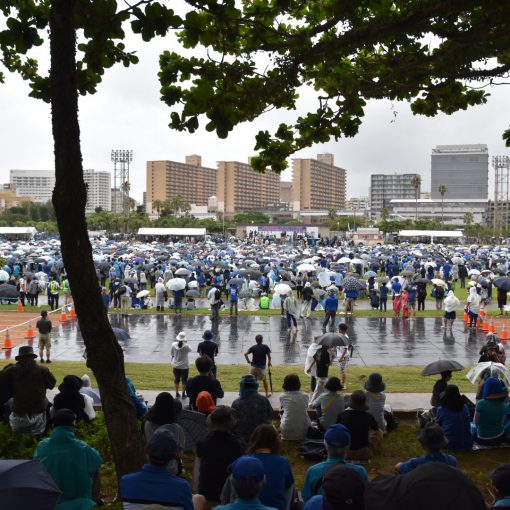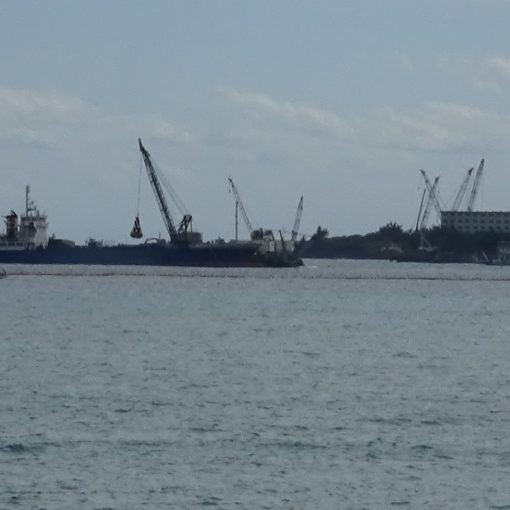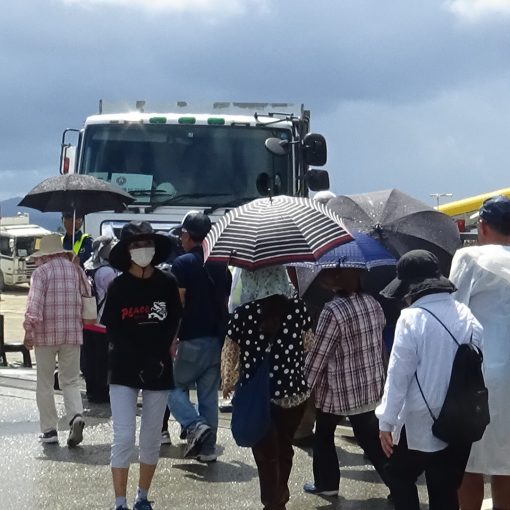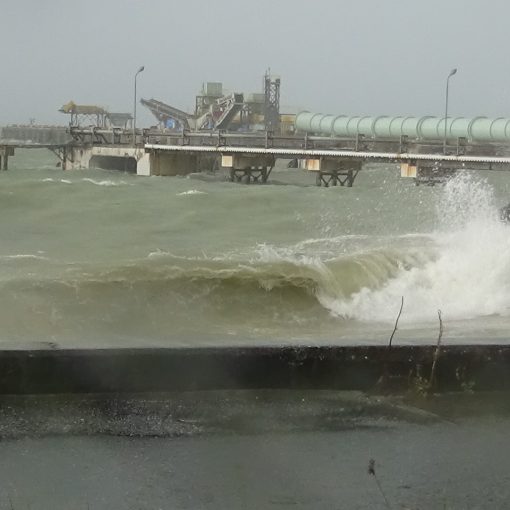As the soft seabed, not included in the original construction plan, was discovered at the reclamation area two years ago, the Ministry of Defense has to file an application with the Okinawa Prefectural Government for permission for the change based on the modified plan. Although the new plan is expected to be submitted by the end of March, Governor Denny Tamaki, who has pledged to oppose the construction of the new base, has publicly stated that he won’t accept any modified plan.
According to the revealed new plan, the Ministry is considering hammering 77,000 sand piles into the seafloor to reinforce the soft ground. They estimate 4 years and 1 month to be needed for the ground impromvement. In addition, special work vessels are required for the work. During a reply by the government in the Diet on Feb 25, it turned out that currently only 10 vessels exist in Japan rather than 15 as previously announced. Among these 10, only three can be workable below more than 70 meters from the sea surface. If all the available vessels would be used only in Oura Bay during this period, no other ground improvement works at sea could be executed. The ground improvement work below 90 meter from the sea surface has been unprecedented anywhere on the earth. Both the U.S. and Japanese governments have kept insisting that Henoko is the only choice. How long will they stubbonly stick to their plan by keep spending tax payers’ money like water? The conclusion is evident.

(In front of Camp Schwab Gate)
Recently, many university students have participated in our sit-ins. Last week, nine Hyogo college students visited the protest sites in Awa and Shiokawa for three days, and joined the sit-ins at the gate. One of them commented, “Unlike the image I had got by watching the internet, the protest site was surprisingly calm and orderly.” Yesterday, 10 college students recruited from across Japan visited the gate. Funded by a cloudfunding, they went around the protest sites for three days.
They were dedicatedly interviewing people, as they are planning to have reporting back events after they get back. At most 53 people participated in the sit-in at the Camp Schwab Gate. 153 truckloads of construction materials were brought in.



(In front of Ryukyu Cement Awa Pier)
Dump trucks resumed to make the left turn to enter the pier. The “agreement” made with Hiroshi Yamashiro last week was dismissed in two days. As dump trucks were coming from the both left and right sides of the road, the protesters had to work without any break.
There were only eight people, but they continued to protest to block the trucks. The delivery of earth and sand continued until 9 p.m. on this day, which has been unprecedented before. 963 truckloads of earth and sand was loaded on the cargo ships.


(In front of Shiokawa Pier at Motobu Town)
Eleven members of the Shimagurumi Uruma stopped the dumps driving toward Awa for nearly one and half hours, until dozens of the riot police rushed in to remove them at 8:45 am. Although being a small group, they kept protesting. 311 truckloads of earth and sand were loaded on the cargo ships.


number of dump trucks to date and percentage against the total
The weight and the volume of earth/soil were estimated per experts’ advice
Number of dump trucks which made delivery from December 2018 to the end of December 2019 114,601(1.68%)
| 29(Sat) | Mar,2(Mon) | 3(Tue) | 4(Wed) | 5(Thr) | 6(Fri) | |
| Awa | 0 | 963 | ||||
| Shiokawa | 0 | 311 |
| Number of dump trucks ※ |
Weightt of earth/sand
※① |
Converted to volume
※② |
Volume per Total
※③ |
| 148,996 | 893,976t | 448,988㎥ | 2.168% |





